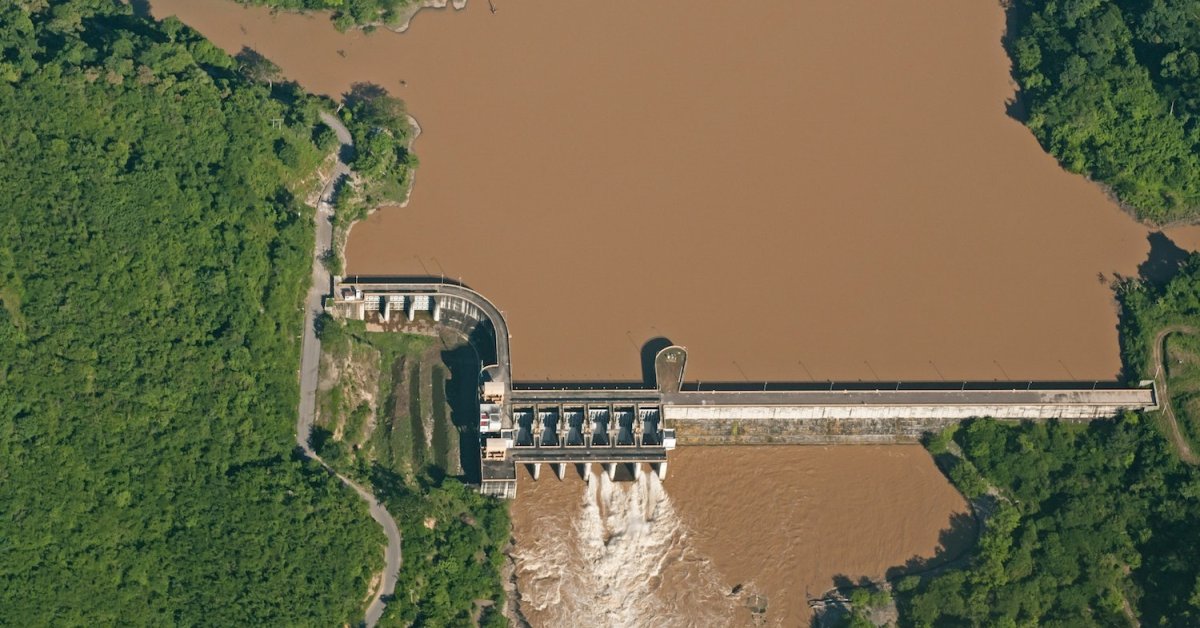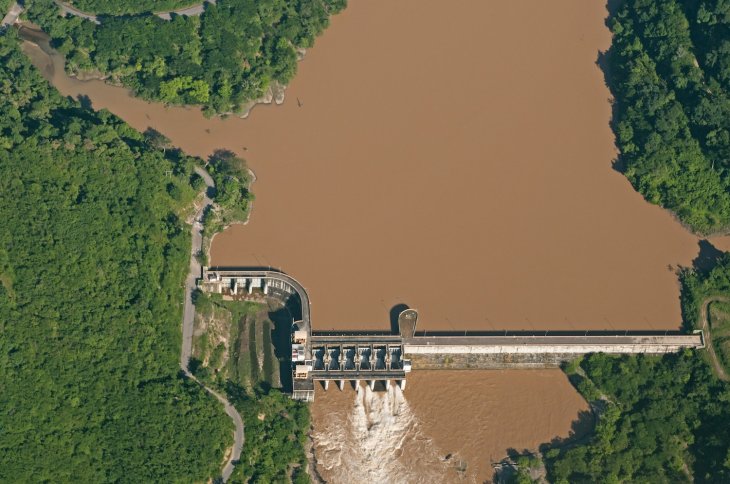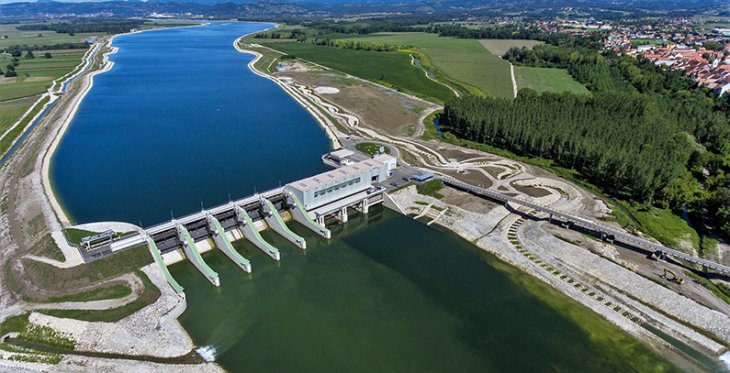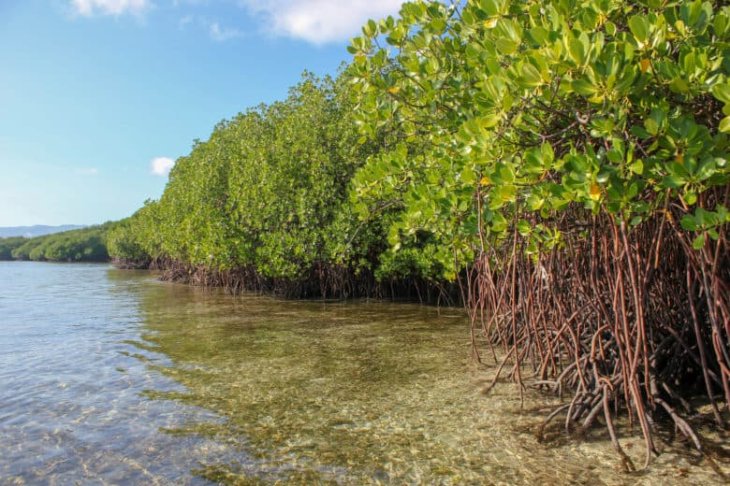Hydropower Plants Release More CO2 Than They Save, Study Finds
Dhir Acharya - Mar 17, 2019

Scientists have discovered that damming rivers can indirectly cause more CO2 released into the atmosphere than producing electricity from fossil fuels.
- Researchers Make Lighter & Biodegradable Drones With Pineapple Leaves
- Going Vegetarian Could Eliminate 16 Years Of CO2 Emissions By 2050
- This Artistic Solution Is Perfect To Reduce Air Pollution In India
While the world is pursuing hydropower for it’s a green energy source, scientists have discovered that damming rivers can indirectly cause of higher CO2 level released into the atmosphere than producing electricity from fossil fuels.
The research team, led by Octavio Aburto-Oropeza, a marine ecologist from Scripps Institution of Oceanography in the US, published their study in Science Advances. Accordingly, the team researched four rivers along the western coast of Mexico, two of which are dammed namely the Fuerte and the Santiago and the others are still free of dams. All of them feed into large estuaries that are lined with mangrove forests.

The team compared the mangrove forests on undammed rivers with those on the dammed ones based on satellites images captured from 1975. They found that the mangrove forests on the undammed rivers were stable or expanding but those on the dammed ones are quickly shrinking.
Aburto-Oropeza said that the world is losing tens of hectares each year.
As per his explanation, the dams trap sediments in land which play an important role in keeping the mangrove forests from the impact of ocean water. One critical result from this fact is the demise of fisheries depending on mangroves to provide juvenile crabs and fish with habitat.
In addition, compared with undammed rivers that feature only between four and eight plant species, dammed ones bring about greater diversity in the estuaries which feature from 26 to 33 plant species. Mangrove forests also eventually release CO2 back into the environment when they die, contributing to global warming.
According to the team leader, mangroves contain carbon in a handful of ways, including roots, trunks, and other biomass. There is even more carbon in the sediments that their roots trap. Consequently, at the loss of mangroves, we no longer have the biological system to sequester a large amount of carbon.
According to Aburto-Oropeza, some of those mangroves have grown on top of themselves for the last 3,000 to 5,000 years. He added that this may add another 900 to 3,400 tonnes of carbon per hectare to the environment.

The information is significant enough for us to have a second thought on hydropower, especially on those rivers studied by the researchers whose water flows are seasonal, generating massive amounts of electricity in the rainy season only. He added that some hydropower plants work in very few months of the year. He also said that the total effect can be far greater as the study didn’t count the upstream impacts from the estuary.
Aburto-Oropeza concluded that these hydroelectric plants are making climate change worse.
The team’s study impressed geologist Amy East from the US Geological Survey’s Pacific Coastal and Marine Science Centre based in California, US. While claiming the study is interesting, she says that dams’ trapping of sediments can have significant downstream impacts.
East explains that dams result in ‘hungry water’, which means the lack of sediments causes the river water to eat away at the dam’s downstream riverbed, hence the erosion of sandbars. Another known fact is that sediment starvation causes river deltas to subside and no longer inhabitable.
Previously, however, people didn’t pay much attention to dams’ impacts on estuaries, ecosystems, or the fisheries. She said that she didn’t know another study assessing these three angles together thoroughly.

Mangrove forests
Aburto-Oropeza adds that analyses of costs for dam building usually focus on the surroundings of the dam only, which includes the soon-to-be submerged river alley. But the study tracks the impacts to as far as the river mouths.
It appears that even the greenest technologies can have drawbacks worth consideration when searching for the most environment-friendly solution. But we can still hope for a way of building hydroelectric power plants without causing rivers to be starved of sediments.
One approach to think of is building ‘run of the river’ hydro projects to divert the water upstream and pipe it to lower-elevation power infrastructure, avoiding an entire block of the river flow.
One thing to note, anyway, is that developing countries are still considering dams as the best thing to produce electricity with less pollution.
Featured Stories

Features - Jul 01, 2025
What Are The Fastest Passenger Vehicles Ever Created?

Features - Jun 25, 2025
Japan Hydrogen Breakthrough: Scientists Crack the Clean Energy Code with...

ICT News - Jun 25, 2025
AI Intimidation Tactics: CEOs Turn Flawed Technology Into Employee Fear Machine

Review - Jun 25, 2025
Windows 11 Problems: Is Microsoft's "Best" OS Actually Getting Worse?

Features - Jun 22, 2025
Telegram Founder Pavel Durov Plans to Split $14 Billion Fortune Among 106 Children

ICT News - Jun 22, 2025
Neuralink Telepathy Chip Enables Quadriplegic Rob Greiner to Control Games with...

Features - Jun 21, 2025
This Over $100 Bottle Has Nothing But Fresh Air Inside

Features - Jun 18, 2025
Best Mobile VPN Apps for Gaming 2025: Complete Guide

Features - Jun 18, 2025
A Math Formula Tells Us How Long Everything Will Live

Features - Jun 16, 2025
Comments
Sort by Newest | Popular